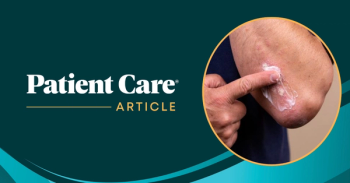
What Treatment for Delayed Sleep Phase Disorder?
The parents of a 17-year-old student complain that he has no energy, is getting poor grades, seems unmotivated, and appears depressed. He stays awake until 3 am and can’t fall asleep even if he tries to go to bed earlier; then he can’t wake up in time for school the next day. On weekends he sleeps in until 2 pm.
Which of the following methods would be most effective for this young man?A. Short half-life hypnotic at bedtime
B. Strict adherence to regular bedtimes at 11 pm
C. Morning bright light therapy
D. Ensure consistent 8 am awakening times daily
Answer: C-morning bright light therapy
This is a typical history for delayed sleep phase disorder (DSPD). Hallmark symptoms include complaints of evening insomnia and morning sleepiness, and, typically, uninterrupted sleep despite a delay in both the time to fall asleep and the time to wake up the next day. The condition is persistent and stable over long periods of time and is more common in younger individuals than the elderly.
The first therapy described for this condition was chronotherapy, which involves a daily 3-hour progressive delay in both bedtime and morning rise time for approximately 1 week until the desired sleep/wake times are achieved. Pre-treatment sleep/wake times are established with sleep logs, completed daily for 2 weeks; these are also completed daily during therapy. Once the desired sleep/wake times are achieved, patients are advised to strictly adhere to the new sleep schedule and to avoid napping.
Another well-described treatment for this disorder is the gradual advancement of sleep/wake times, by increments of 15 minutes per day, with morning bright light therapy (option C), for 1 to 2 hours, typically at 2000 to 10 000 LUX, and melatonin, 1 to 3 mg, prior to bedtime. Treatment is typically administered for a period of weeks or months.
During the course of bright light therapy, patients are instructed to avoid napping, to adhere to sleep hygiene principles, and to avoid exposure to bright light sources such as television and computer monitors prior to bedtime. Side effects of light therapy include anxiety, headaches, nausea, and eye strain. Infrared and ultraviolet light spectra can damage the lens, cornea, retina, and pigment epithelium and the latter can interact with photosensitizing agents; these can be mitigated by the use of appropriate filters. Patients with retinopathies, glaucoma, and cataracts should be excluded or carefully evaluated prior to exposure. Hypomania, especially in seasonal depressive patients, appears to be a rare complication, and may be more likely to occur in patients with a history of bipolar disorder.
Hypnotics (option A) are not indicated for the treatment of individuals younger than age 18 and have not been shown to be effective in DSPD. Adherence to 11 pm bedtimes (option B) is unlikely to be effective since the individual’s sleep/wake cycle is delayed and he would likely be unable to fall sleep until late into the night.
The maintenance of regular, morning, awakening times (option D) is important following the completion of treatment, but, as a sole measure, is unlikely to be effective in this disorder.
References:
Czeisler C, Richardson G, Coleman R, et al. Chronotherapy: Resetting the circadian clocks of patients with delayed sleep phase insomnia. Sleep. 1981;4:1-21. (Abstract)
Sack R, Auckley D, Auger RR, et al. Circadian rhythm sleep disorders: Part II, advanced sleep phase disorder, delayed sleep phase disorder, free-running disorder, and irregular sleep-wake rhythm. Sleep. 2007;30:1484-1501. (Full text)
Newsletter
Enhance your clinical practice with the Patient Care newsletter, offering the latest evidence-based guidelines, diagnostic insights, and treatment strategies for primary care physicians.























































































































































































































































































































